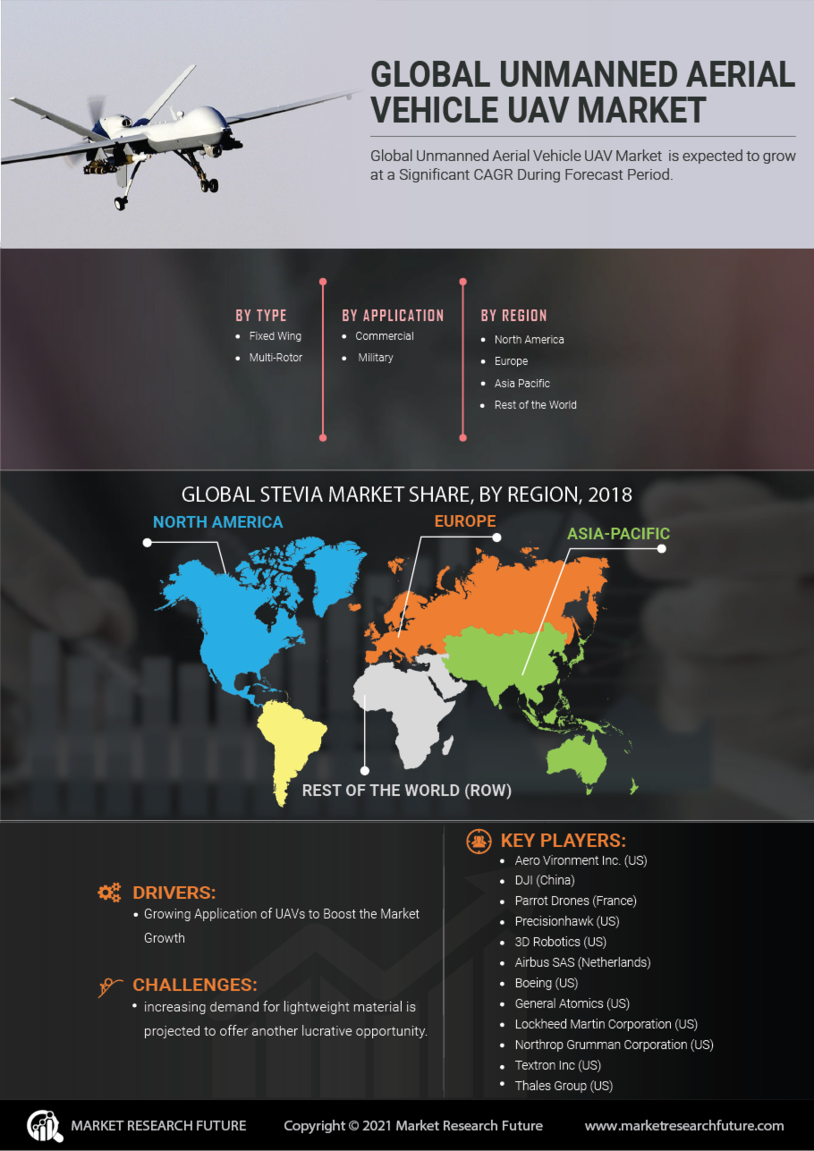Advancements in Drone Technology
Technological innovations are propelling the Unmanned Aerial Vehicles Market forward. Recent advancements in battery life, payload capacity, and autonomous navigation systems are enhancing the operational capabilities of drones. For instance, the development of hybrid drones that combine electric and fuel-based power sources is extending flight durations and increasing efficiency. Furthermore, the integration of artificial intelligence and machine learning is enabling drones to perform complex tasks with greater precision. As a result, the market is experiencing a surge in demand for sophisticated unmanned aerial vehicles that can cater to various applications, including agriculture, surveillance, and infrastructure inspection. This technological evolution is expected to drive the Unmanned Aerial Vehicles (UAV) Market to new heights, with a projected market value of USD 58 billion by 2026.
Military and Defense Applications
The military sector remains a key driver for the Unmanned Aerial Vehicles Market. Unmanned aerial vehicles are increasingly being deployed for reconnaissance, surveillance, and combat operations. The Unmanned Aerial Vehicles is expected to reach USD 20 billion by 2025, reflecting the growing reliance on UAVs for strategic operations. The advantages of drones, such as reduced risk to personnel and enhanced operational efficiency, are compelling military organizations to invest in advanced UAV technologies. As nations continue to modernize their defense capabilities, the demand for sophisticated unmanned aerial vehicles is likely to escalate. This trend suggests that the Unmanned Aerial Vehicles (UAV) Market will continue to thrive, driven by innovations in military applications.
Regulatory Support and Frameworks
The establishment of supportive regulatory frameworks is crucial for the growth of the Unmanned Aerial Vehicles Market. Governments are increasingly recognizing the potential of drones and are working to create regulations that facilitate their safe integration into airspace. Recent initiatives have focused on streamlining the approval processes for commercial drone operations, which is expected to encourage investment and innovation. As regulations evolve, the market is likely to see a rise in commercial applications, ranging from aerial photography to infrastructure inspection. This regulatory support is essential for fostering a conducive environment for the Unmanned Aerial Vehicles (UAV) Market, enabling businesses to leverage drone technology effectively.
Growing Applications in Agriculture
The agricultural sector is increasingly adopting unmanned aerial vehicles, which is significantly influencing the Unmanned Aerial Vehicles Market. Drones are being utilized for crop monitoring, precision agriculture, and livestock management, providing farmers with valuable data to enhance productivity. The use of drones in agriculture is projected to grow at a compound annual growth rate of 30% over the next five years. This growth is attributed to the need for efficient resource management and the ability to cover large areas quickly. By employing drones, farmers can optimize their operations, reduce costs, and improve yields. Consequently, the Unmanned Aerial Vehicles (UAV) Market is likely to see a surge in demand for agricultural drones, which are equipped with advanced sensors and imaging technology.
Increased Demand for Delivery Services
The rise in e-commerce has led to a burgeoning demand for efficient delivery services, which is significantly impacting the Unmanned Aerial Vehicles Market. Companies are increasingly exploring drone technology to enhance last-mile delivery solutions. According to recent estimates, the drone delivery market is projected to reach USD 29 billion by 2027, indicating a robust growth trajectory. This demand is driven by the need for faster delivery times and reduced operational costs. As businesses seek to optimize logistics, the integration of unmanned aerial vehicles into their supply chains appears to be a strategic move. Consequently, the Unmanned Aerial Vehicles (UAV) Market is likely to witness substantial investments aimed at developing advanced delivery drones capable of navigating complex urban environments.


















Leave a Comment